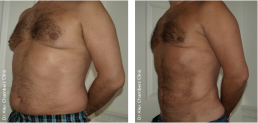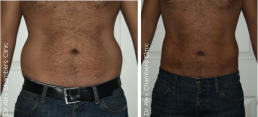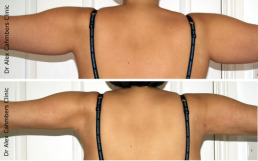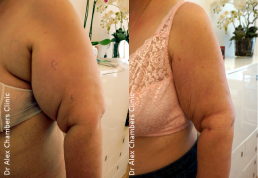Types of Facelifts
A facelift is a cosmetic surgical procedure that rejuvenates the appearance of the face and neck. Depending on the objectives of the patient, the procedure can affect several parts of the facial anatomy. The figure shows four separate areas, and the patient and surgeon decide together which zone or zones should be treated to achieve the desired result. The areas affected can be the lower face, the mid face, the forehead and brow, and the eyelids.
The objective of a facelift procedure is to tighten saggy and lax soft tissues of the face and neck to produce a crisper jawline as well as tighter, smoother skin. The operation repositions various tissue layers of the face and neck, sutures it into place, and excises excess skin. Incisions and sutures are made so that any resulting scars are hidden, as much as possible, behind the ears, above the hairline of the scalp, and in the natural creases of the face.
There are several approaches to performing facelifts, and the optimal method is a balance between costs, recovery time, and patient expectations. Factors that must be considered include age, gender, degree of skin laxity, skin thickness, as well as external factors related to lifestyle.
Surgical methods for facelifts
As mentioned, the type of surgical lift will balance several trade-offs, and will depend on the patient’s objectives as well as the observed degree of laxity in the neck and face. The procedure will depend on the tissue planes to be adjusted, the type of incisions used, and the surgical technology employed. These choices will determine the longevity of the results, and will affect recovery times following the operation. The less invasive the technique is, the speedier the recovery, however it may also be less dramatic and enduring.
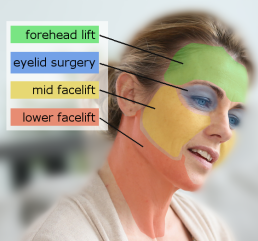
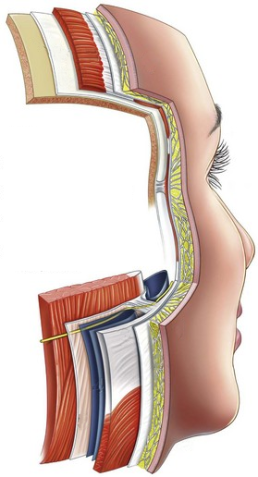
Tissue planes
The degree of tightening and smoothing of the skin that can be achieved by a facelift will depend largely on the tissue plane targeted by your surgeon. As shown in the illustration below, the face consists of a series of tissue layers, each with a different function. The outermost group of layers is the skin and subcutaneous fat, and beneath these is a group of muscle and connective tissue. Separating the two groups is a thin layer of tendon like tissue called the SMAS.
facial tissue planes
Facial Tissue Planes
A facelift either tightens the layers below the SMAS or above it. Typically facelifts above the SMAS (for example, mini facelifts) are less invasive, using smaller incisions, and facelifts implemented below the SMAS require broader ones.
For facelifts below the SMAS (deep tissue plane lift), the surgeon tightens the muscle layer. However, to accomplish this he or she needs to separate it from the SMAS. This requires good visual access, and thus a broader incision. A sub-SMAS facelift produces significant surgical trauma, but also can deliver a more substantive and longer lasting result.
Facelifts performed above the SMAS (shallow tissue plane lifts) are primarily focused on tightening the soft tissues of skin and subcutaneous fat. It produces a more a more natural result, and can be performed without direct visual access to the tissue layers. For these reasons, these types of facelifts can be performed with much smaller incisions, and provoke significantly less surgical trauma.
Whether the patient and surgeon opt for a deeper plane facelift or a shallower one will depend on a variety of factors. Those performed below the SMAS will require significantly longer recovery periods, are most expensive, and might not provide a better result than those above the SMAS. These trade-offs need to be discussed between the patient and their surgeon.
Types of incisions
There are several ways of accessing the tissue planes. The types of incisions made are classified as short scars (called S-scars or MACS), long scars, extended scars, and keyhole scars.
A shorter scar is not necessarily better. Short incisions can sometimes result in puckering or a visible reorientation of skin. This only happens, however, if too much tightening is attempted for a shallow tissue plane facelift. If the surgeon properly assesses the needs of the patient and remains within reasonable bounds puckering is unlikely to happen.
Regardless of the scar length, your surgeon will plan their incisions so that natural creases in the skin act to hide them. Moreover, they will close and suture the incision in way that minimizes the appearance of the resulting scar. In some cases, post-operative treatments will be considered to achieve even greater visible reductions in scarring.
Improving Skin Thickness and Elasticity
As discussed in our article on skin retraction after liposuction, the quality of skin retraction and redraping is an important part of achieving the best Vaser lipo result. As this depends mainly on the skin’s thickness and elasticity, treatments to improve skin quality are an option that some patients may want to consider before surgery. In some cases this can also be helpful after surgery (for example, using HIFU).
This article discusses the mechanisms that allow the skin to improve in quality, and the treatments that can be used to trigger this. The diagram below illustrates the key elements of this process. When comparing younger and older skin, we can see that there is an important difference in the amount of collagen and elastin.
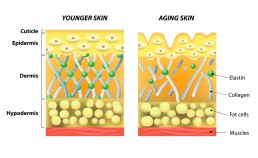
The treatments used for revitalizing and improving the skin work by stimulating it to produce more collagen and elastin. This is achieved through a process of controlled injuries. The skin then works to repair the injury, and by doing so, it creates more of these two keys skin components, while also stimulating the increase in connective tissue and blood vessels. The overall process thickens the skin, and increases its elasticity. It also generally improves the smoothness of the skin’s surface, reducing wrinkles, and rejuvenating its appearance. A variety of methods can be used to achieve this, and these are discussed in the following sections.
Micro-needling
A well-known method for inducing controlled dermal injuries is through the use of micro-punctures. Devices such as derma-rollers and derma-stamps can be used to create a matrix of small punctures to the skin. This, in turn, stimulates bio-chemical signals that trigger the mechanisms of skin repair such as neocollagenesis. This is a non-surgical method that is inexpensive. For good results multiple applications over a period of six weeks are needed per area treated, and results can last up to a year.
Gold thread skin rejuvenation
Similar to micro-needling, but longer lasting is the technique of gold thread rejuvenation. This is the implantation of fine threads made of surgical grade, pure gold. These are deployed in a mesh fashion in a pattern that depends on the area of the skin requiring improvement. The method can double skin thickness, improving its elasticity and suppleness. It also promotes growth of new capillaries, so not only does the skin become thicker, it is also better nourished and oxygenated. This is a low-impact surgical method that produces results that can last up to five years. The treatment is required only once per area treated and the threads can be implanted in a few hours.
Recosma laser skin tightening
Various laser technologies have been used to improve skin quality and tightness, but often with variable results and, sometimes, adverse reactions. Newer technologies such as the Recosma laser have been shown to deliver skin improvement results faster and also with fewer side effects.
This type of laser produces a more controlled injury to the skin, keeping power levels low. The method relies on mechanical stimulation of the skin instead of thermal. Several applications are typically required with recovery periods of five to seven days in between to achieve good results.
In addition to improving the skin, the Recosma treatment is also a very effective laser scar removal treatment that can be used to improve the aesthetic aspects of acne scars, general scars, and stretch marks.
High energy focused ultrasound (HIFU)
HIFU is an ultrasound-based technology that creates a focused beam of acoustic and thermal energy and applies it at various skin depths. It has been successfully used to facilitated retraction and stimulation of soft tissues.
Radio frequency (RF)
Similar to HIFU, but using radio waves instead of ultrasound, RF delivers focused energy to target tissues.
Medical grade topical skin products
It has been shown in many medical studies that retinol, concentrated alpha- and beta- fruity acids, anti-oxidants, anti-inflammatory, and pigment-stabilizing agents are all valid as topical preparations for improving the cellular metabolism of skin and promoting neo-collagenosis. To be effective they must be used in a compounded, prescription doses, and applied daily. Long-term use is required to achieve good results.
Surgical redistribution with anchoring threads
For some cases, satisfactory skin retraction can’t be achieved by any of the previously described methods. In this case, a surgical redistribution of the skin can be made in a manner similar to what is done for mini-facelift procedures. That’s to say, the skin is stretched with use of threads under the skin, and the excess skin at the perimeters is then trimmed. The incisions are positioned so that scars are optimally hidden in the natural creases of the body.
Summary
For some patients it will be possible to improve the body’s contours while simultaneously achieving good skin retraction. For others there will be a clear trade-off, as the skin will not retract sufficiently for some ambitious body contouring goals. For this latter case, it is up to the patient to decide the balance they wish to achieve. The surgeon’s responsibility is to assess the skin, and provide the patient with advice on likely outcomes, and ways to further improve the skin’s appearance.
Skin Retraction after Liposuction
After any liposuction procedure the volume of the fat layer under the skin is reduced – sometimes dramatically. Regardless of the amount removed, there is always a question about how well the skin will retract and redrape over the treated area. Thicker, more elastic skin typically retracts better than thinner older skin. Factors that affect the skin’s elasticity include the patient’s age, gender, and skin pigmentation type.
From an aesthetic perspective, there is always a trade-off between the amount of body-contour remodeling that can be achieved through the removal of subdermal fat and the post-surgical appearance of the skin as it conforms to its new shape. Poor skin retraction will result in wrinkles or folds. Post surgical appearance will also be affected by pre-existing skin issues such as laxity, atrophy, and stretch marks.
Factors influencing skin retraction following body contouring
Post surgical skin remodeling and redraping will be affected by a variety of factors, including the patient’s:
- Age
- Gender
- Race
- Area treated
- Pre-existing skin conditions
Age factor
As we age, there is a reduction in the levels of our skin’s elastin, collagen, and connective tissue. Moreover, having had greater cumulative exposure to UV radiation, the skin will have undergone more oxidative cellular damage. Consequently, there will be a proportional reduction in the speed of post-surgical healing, and skin remodeling of the tissues will be less effective.
Gender and race factors
Men typically have thicker skin and a more robust matrix of connective tissue between the skin and its subcutaneous layers than do women. Because of this men typically have better skin retraction than women.
Certain racial groups, such as Afro-Caribbean and Asians generally have more robust skin than Europeans, and so typically have better skin retraction. On the other hand, darker skin can sometimes suffer pigmentation mottling after a liposuction.
Body areas
Skin quality will vary over the body. Its thickness and elasticity will be subject to environmental factors, such as sun exposure, as well as the patient’s life history.
Skin on the inner side of the upper arms and on the inner thighs is usually thinner than in other areas of the body for most people. This explains why skin displays more laxity in these areas as we age.
Mechanical stress of skin can also diminish its elasticity. This can be seen in women who have had repeated pregnancies. For active people, it can also be apparent above the knees and around the elbows.
Skin that has been more exposed to the sun will have lost some of its elasticity, and be more prone to sagging with age.
Other factors
Other issues that will affect skin retraction after a liposuction include connective tissue disorders, skin stretched by massive weight loss, a deficiency in collagen or elastin fibers, smoking damage, and chronic dehydration.
Fat Transfer Demonstration at BABS Spring 2015 Meeting
The Spring 2015 meeting of the British Association of Body Sculpting (BABS), held on the 24th of May, was organised and hosted by Dr Alexandra Chambers at her clinic in the Harley Street enclave in London. The main topic of the semi-annual meeting was on fat transfer techniques based on liposuction technologies such as Vaser. Body sculpting is primarily about the removal of fat, and the aesthetic benefits of this approach can be appreciated by comparing liposuction before and after photos. Fat transfer is an additional tool for reshaping the body, using the patient’s own fat cells to fill out and produce a more aesthethic profile.
The meeting included a demonstration of fat transfer technique, performed in the Dr Chambers Clinic private operating theatre. Roughly twenty cosmetic surgeons attended the meeting, and discussions were educational and stimulating.
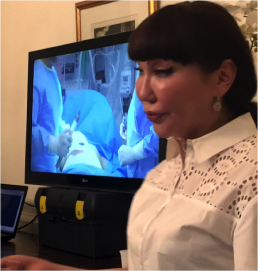
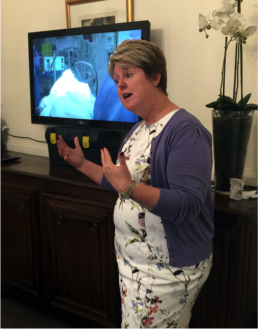
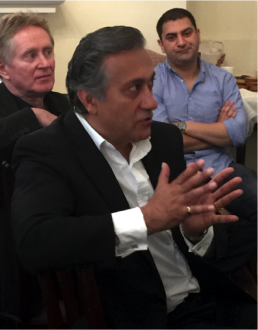
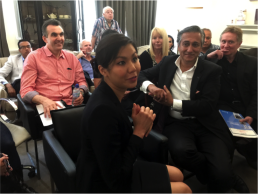
Tummy Tuck
An abdominoplasty, commonly known as a Tummy Tuck, is a surgical procedure that does two things. It removes loose skin and fat from the abdomen in the area between the middle and lower stomach, and it tightens up the underlying stretched-out muscles. This significantly flattens the tummy, and reduces unsightly rolls. The Tummy Tuck is a common procedure for women wanting to improve their body’s contours after pregnancy or major weight loss.
Surgical Steps
For a full abdominoplasty an incision is made from hip to hip just above the pubic area, and another incision made to free the navel from the surrounding skin. The skin is then detached from the abdominal wall, revealing the muscles and fascia. Sutures are used to tighten the muscle fascia wall, and if neeeded liposuction is used to refine the abdominal contours. A mini-abdominoplasty is done with a smaller incision similar to that of a C-section.
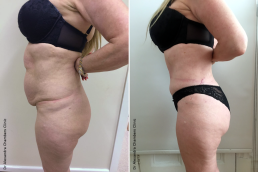
The mini-bdominoplasty is a day procedure, but a full one requires an overnight stay in our recovery ward. Both are performed under general anaesthesia.
Recovery
A compression garment must be worn for a few weeks after surgery to ensure that the skin heals and readheres smoothly against the abdominal wall. This prevents the effects of gravity or clothing from adversely affecting the positioning of the skin, and helps deliver a smoother final result. Pain killers are provided to help manage any discomfort over the first few days after the operation.
Several post-operative care visits are required after surgery. These are to ensure that wound healing is progressing without infection and to monitor for inflammation. Also, various treatments are provided to accelerate the reduction of swelling and bruising. Full recovery from all effects of swelling and bruising can take several months, but one can typically return to work after a week, and most effects will have subsided after two to three weeks.
As all nicotine products reduce oxygen in the blood, these must be completely avoided, as they will adversely affect healing.
Scarring
An abdominoplasty does leave a significant scar, however, the incision is made below the bikini line. In most cases, this positioning of the scar prevents it from being seen at the gym or on the beach. The scar will seem prominent at first, but with proper care, it’s appearance will diminish over time. In some cases, additional treatments such as J-Plasma may be able to provide additional scar reduction.
Our Private Liposuction Operating Theatre

Ensuring Patient Privacy and Safety
Many cosmetic doctors use hospitals to perform surgical procedures, however, hospitals are environments that manage high volumes of sick patients, and this can expose otherwise healthy patients, strictly present for cosmetic treatments, to aditional risks of infection. This is why our clinic has its own operating theatre, fitted out with state-of-the-art equipment.
It allows us to improve patient safety by significantly reducing risks of infection, and also ensures higher levels of privacy than can hospitals… an important factor for many of our high-profile patients. The clinic undergoes regular, rigorous audits by an external examiner on a regular basis, and we can demonstrate very low levels of surgical infection. Our theatre is used for Vaser liposuction, mini facelifts, and gynecomastia treatment, and has all the technology needed to provide the safest possible environment for our patients. This includes state of the art monitoring and anaesthesia equipment.
The CQC evaluates our clinic highly, and the most recent CQC report on the Dr. Alex Chambers Clinic can be found on their website.
Vaser Liposuction vs. Dieting
What are the pros and cons?
Liposuction is a medical procedure used for body sculpting. It works by removing sub dermal fat in target areas, including the face, arms, legs. torso, flanks, abdomen, and so on. The technique is used to improve one’s silhouette by reducing the thickness of the fat layer. This can remove unwanted folds, and deliver a more aesthetic look.
Similar results, however, can be achieved through exercise and dieting. So what are the benefits and drawbacks of each approach? This article answers these questions.
Time required to achieve results
Although a liposuction procedure normally only takes a few hours, post-operative recovery typically requires six to eight weeks for swelling and bruising to fully subside (see this published study on the duration of Vaser swelling and bruising).
By contrast, with proper dieting and resolve, patients can reasonably lose 100 grams of fat per day. Thus, in a similar period, one could expect to lose 4.2 to 5.6 kilos of fat. This amount is equivalent to what a liposuction operation would remove.
Long-term maintenance of results
The body does not replace fat cell, so once they are removed they are gone for good. That said, liposuction only targets specific areas, and doesn’t remove all the fat there. Thus, if a healthy lifestyle of exercise and diet is not followed after a procdure, the remaining fat cells in the target area can store those excess calories, and grow.
Cost
In our clinic, the cost of a lipo procedure is based on several factors. They include the amount of fat to be removed, the skin type, and the precision required (see this in-depth article on Vaser lipo costs). Costs can range from £2,500 to £13,000. By contrast, dieting is effectively free, just requiring discipline and perseverance.
Risks
Liposuction is a surgical procedure with all the associated underlying risks. This includes infection and (on rare occasions) serious injury. Furthermore, aesthetic results cannot be guaranteed. For example, poor skin retraction can lead to wrinkles and sagging.
By comparison, modest dieting, as discussed above, is rarely of any danger for healthy people.
Effectiveness
Some people live very healthy lifestyles, consuming reasonable levels of calories and engaging in regular exercise. However, dieting does not reduce fat uniformly from the body. Most people tend to accumulate fat more readily in specific areas. For women this is typically the hips and thighs, and in men it’s the abdomen.
This means that often there are specific pockets of fat that can be quite difficult to eliminate through dieting and exercise alone. This is one of the prime motivations for using liposuction, as it can target precise areas of the body, delivering results that cannot be achieved in any other way. An example of this in men is male breast reduction that can only be effectively handled by gynecomastia treatment (surgically removing both fat and glandular tissue).
Benefits
Dieting in itself has limited benefits, rather it’s the adoption of a healthy lifestyle that is key. However, when carefully monitored, it can help a person understand the types of foods and quantities that constitute a more balanced diet.
Liposuction benefits people who don’t have the resolve to follow a diet. It can also remove pockets of fat that can’t be removed through diet and exercise. In addition, it can improve a person’s self-image, which can have significant psychological advantages.
Limitations
Liposuction can only safely remove up to six litres at a time. It is not suitable for patients who are obese (for example, with a BMI in excess of 30).
In addition, patients with thinner, less elastic skin will have poor post-operative skin retraction. This can give rise to wrinkled and sagging skin in the treated areas.
Conclusions
Liposuction benefits people who would like to refine their silhouette, but cannot achieve the results they desire through dieting.
| Considerations | Liposuction | Dieting |
| Time | Four to six weeks | Four to six weeks |
| Maintenance of Results | Equal | Equal |
| Cost | £2,500 to £13,000 | Free |
| Discomfort | Swelling & bruising | Feelings of hunger |
| Risks | Infection and injury | Low for healthy people |
| Effectiveness | Good | Variable |
| Benefits | Improved outlook | Improved eating habits |
| Limitations | Not for overweight people | Requires high degree of resolve |
Vaser Lipo Post-Operative Care
Aftercare is key to achieving a good aesthetic result
Patients are often unaware of the importance of post-operative aftercare for their Vaser liposuction procedure. This article complements the information on our main page for Vaser lipo, explains why it is so important for achieving good aesthetic results, and describes its main components.
The objectives of post-operative care after a liposuction procedure are:
- Ensuring smooth retraction of skin
- Accelerating the speed of recovery, as well as the reduction of swelling and bruising
- Removal of fluids and seromas
- Monitoring of infection
Ensuring smooth retraction of skin
Compression garment used to ensure smooth skin retraction after a Vaser lipo procedure
Reducing swelling and bruising
Any surgical procedure will traumatise the skin layer, and this will result in swelling and bruising. This is part of the natural healing process of the body, but can be unsightly and uncomfortable. The time needed for swelling and bruising to subside varies per patient (for more info, see our study on Vaser liposuction swelling, bruising, and numbness), however, the healing process can be accelerated by good post-operative care.
For each of your post-operative visits to our clinic, we provide a variety of treatments to help accelerate the reduction of swelling and bruising. These include manual lymphatic drainage massage, which helps fluids migrate from swollen tissues into the lymph system. Also, a variety of skin treatments are used, such as ultrasonic cavitation, electrophoresis, and vacuum massage.
Draining of fluids
A Vaser liposuction procedure includes the irrigation of the sub-dermal layer with a saline solution that helps remove the fat cells. Some of this fluid will remain in the body after the procedure, and although this will eventually be elminated by the lymphatic system, in some cases, the doctor will install drains to allow the flluids to evacuate more quickly. The drains are typically removed on the first or second post-operative care visit.
Sometimes Vaser lipo procedures give rise to a build up of fluid pockets. These are called seromas, and your post-operative care will examine you and remove them if they occur.
Monitoring for infection
In contrast with liposuction procedures performed in high-volume hospitals accepting patients with a wide variety of illnesses, we perform all liposuction procedures in our own operating theatre. As we only perform cosmetic procedures, this significantly reduces infection rates in comparison to hospitals. However, as patients return home after surgery, the chance of a post-operative infection, although low, is not zero. The ones that do occur are normally superficial skin infections. Thus, each of your post-operative visits to our clnic will include an inspection for infection, and anti-biotic care as needed.
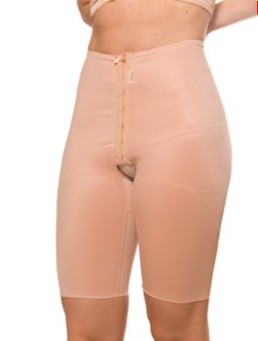
Vaser Liposuction Consultations
Liposuction consultation process
This page complements our main page on Vaser liposuction, providing more in-depth information on how we use the consultation process at the Dr. Alex Chambers Clinic to achieve the best possible aesthetic results for our patients. The consultation will help your surgeon better understand your expectations and your body, as well as provide invaluable information needed for you to make a decision about whether Vaser lipo is right for you.
Our consultation process consists of four main components:
- Understanding patient expectations
- Evaluating skin thickness and elasticity
- Measuring the amount of fat to remove
- Taking stock of any muscular asymmetries
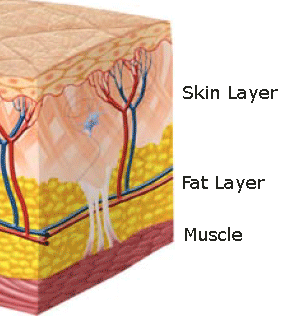
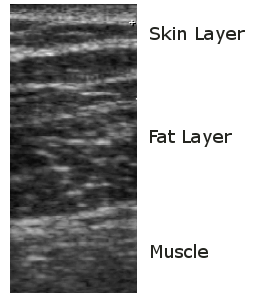
Patient expectations
Before undertaking a Vaser lipo procedure, each patient will want to know what can be reasonably achieved. Thus, a key step in the consultation process is discussing the patient’s objectives, and comparing this to results achieved for other patients of similar age, gender, skin type, and body type as your own. We will show you before and after photos of our past procedures, and this will allow you to make the best informed decision about whether a Vaser lipo treatment is right for you.
In addition to reviewing before and after photos of similar patients, your surgeon will examine you and make an evaluation of your suitability for this type of procedure. This examination will include measuring the elasticity of your skin, the amount of fat to remove, muscle tone, and any underlying muscular asymmetries.
Skin thickness and elasticity
When removing fat, it is important to know whether the skin will be sufficiently elastic to smoothly retract with a minimum of wrinkling. Thicker skin is more elastic, and during the consultation in our clinic, the surgeon will make ultrasound measurements of your skin thickness. From this, you will get a good idea of how well your skin will retract after surgery. If the skin in the areas to be treated is too thin, treatments can be proposed to improve its quality prior to undergoing the procedure. These can include a variety of skin therapies such as micro-needling, gold thread rejuvenation, and platelet rich plasma injections.
Fat volume
Your surgeon will also use ultrasound measurements to determine the fat volume to be removed. This is accurately calculated as a function of the fat layer thickness and the surface of the areas to be treated. The total amount of fat to be removed will also depend on the degree of liposuction to be undertaken. High-def Vaser lipo will remove more fat than general body sculpting.
After the surgeon has taken the ultrasound measurements, the fat volume to be removed is calculated using a spreadsheet. This is then used to provide the best price for your liposuction procedure.
Muscular asymmetries
Finally, the ultrasound measurements will also be used to take stock of any underlying muscle mass asymmetries. Most people are stronger on one side of their body than the other, and this information will help the surgeon deliver a more balanced, aesthetic result for you.
Vaser Lipo Patient Consultation Process
Evaluating Liposuction Suitability
Many people contact us to ask whether they are suitable candidates for Vaser liposuction. We always insist they come to our clinic for an in-depth consultation so we can evaluate their suitability, and give examination-based advice on what they can reasonably hope to achieve.
Bodysculpting surgeries such as Vaser are aesthetic procedures not required for good health, however, a patient’s emotional well-being can be affected by their body perceptions. Lipo procedures can help refine an individual’s profile, and in so doing improve their self confidence.
It is key, however, that doctors carefully evaluate patient suitability and expectations, and then communicate to them in depth about what can be reasonably achieved. The consultation process evaluates both the patient’s physical and psychological suitability, and provides both quantitative and qualitative data that serve as a basis on which the doctor and patient cn make better decisions about surgery.

